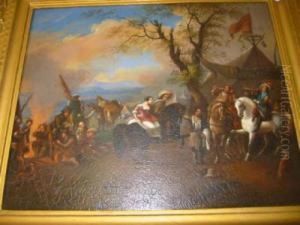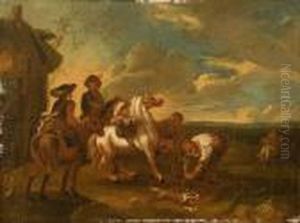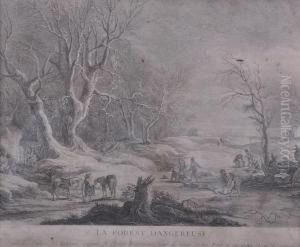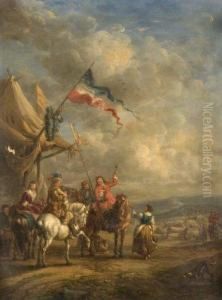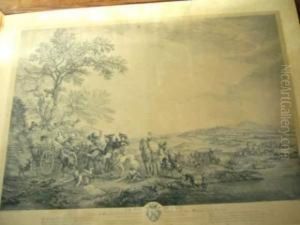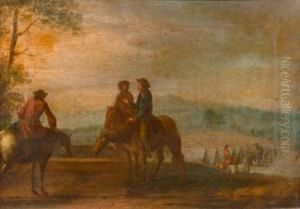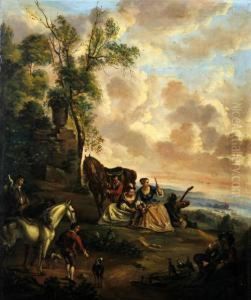Philippe Wouverman Paintings
Philips Wouwerman was a prolific Dutch painter born in Haarlem, Netherlands, in 1620. He hailed from an artistic family; his father, Pouwels Joostz Wouwerman, was also a painter, which provided Philips with an early introduction to the world of art. Despite the familial connection, Philips developed a distinctive style that made him one of the most successful and influential landscape and genre painters of the 17th century Dutch Golden Age. He was particularly renowned for his dynamic and detailed depictions of horses, battles, and hunting scenes, which were highly sought after by collectors during his lifetime and beyond.
Wouwerman began his formal training in Haarlem, possibly under the guidance of his father or another local artist. There is also speculation that he may have studied with Pieter van Laer (known as 'Il Bamboccio'), a Haarlem painter famous for his 'bambocciate,' or scenes of peasant life, which could explain Wouwerman's interest in genre scenes. Despite the uncertainties regarding his early education, Wouwerman's talent quickly became apparent. By the mid-1640s, he had established himself in Haarlem and joined the Haarlem Guild of St. Luke, an association of painters, which marked the beginning of his prolific career.
Wouwerman's works are characterized by their exquisite detail, vibrant energy, and the ability to capture the elegance and power of horses. His landscapes are populated with figures engaged in various activities, from the leisurely pastimes of the aristocracy to the more humble tasks of peasants. He had a keen eye for the natural world, rendering forests, dunes, and skies with a delicate touch that has been admired for centuries. Philips Wouwerman's paintings were not only popular in the Netherlands but also in other parts of Europe, with a significant number of his works finding their way into royal and noble collections.
Despite his success, little is known about Wouwerman's personal life beyond his work. He was married to Annetje Pietersdr. van Broeckhof in 1646, with whom he had several children. Philips Wouwerman died on May 19, 1668, in Haarlem, leaving behind a vast oeuvre that continues to be celebrated for its contribution to the Dutch Golden Age of painting. His influence persisted long after his death, inspiring future generations of artists to explore and expand upon the themes and techniques he perfected.
